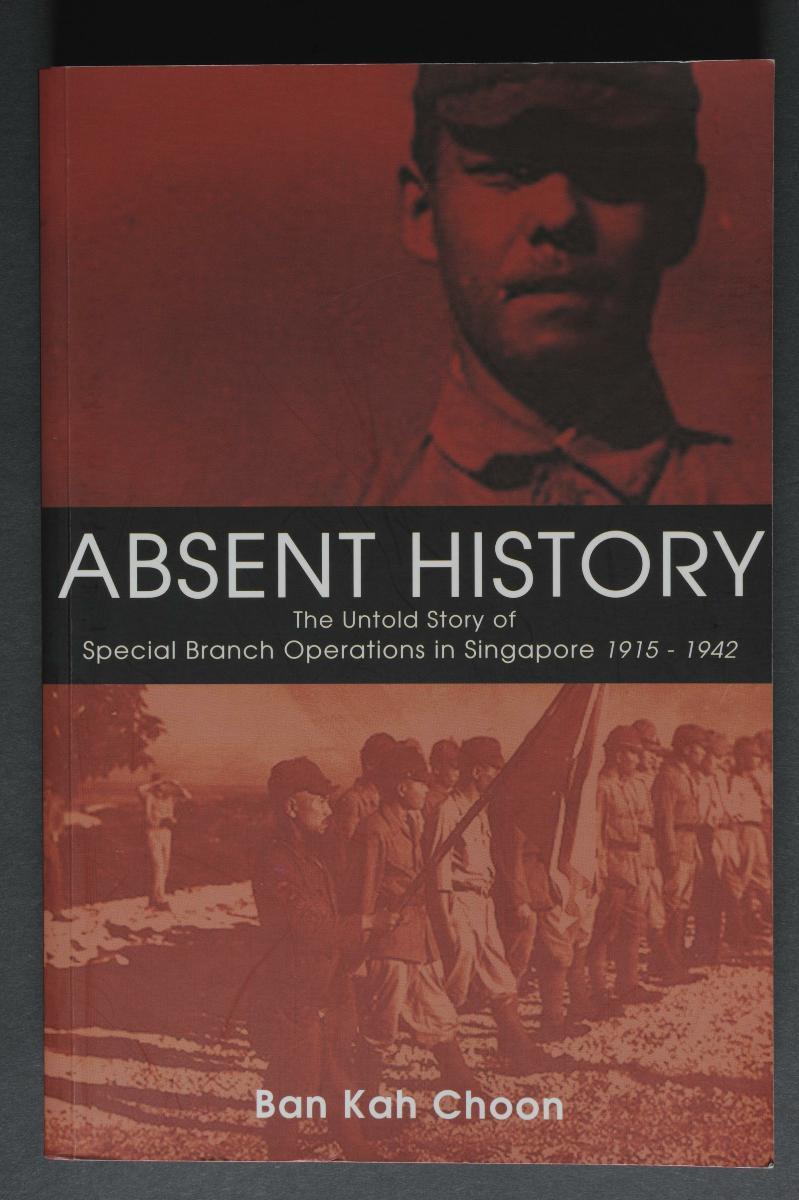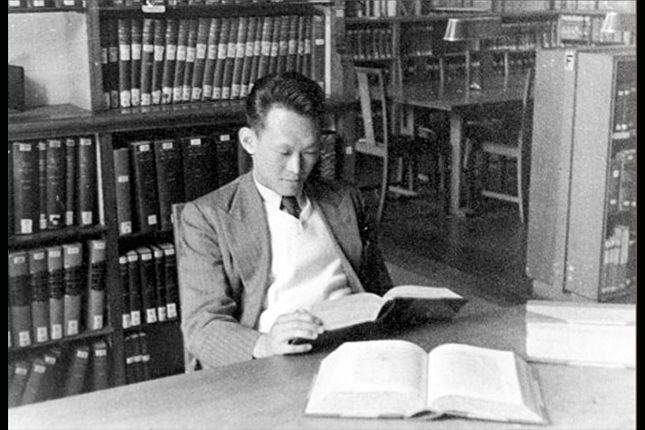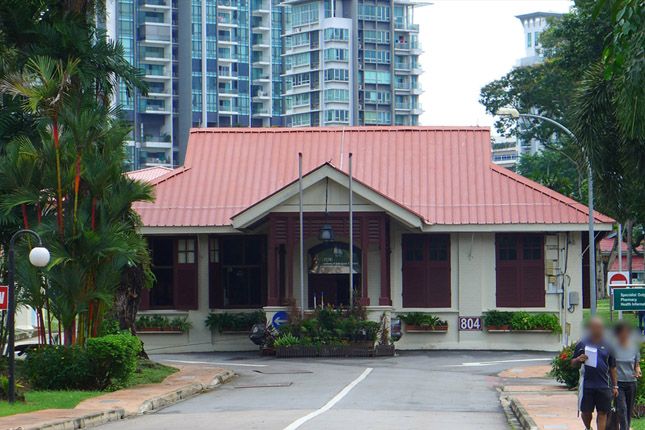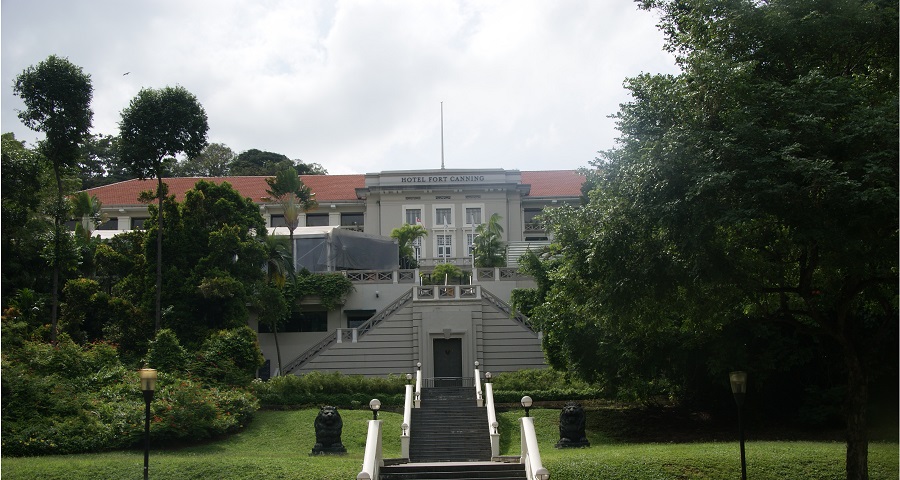Text and photos courtesy of Lee Yane
MuseSG Volume 9 Issue 1 - Jan to Mar 2016
THE FIVE-DOLLAR TREE

A majestic icon stands, tucked away within the Singapore Botanic Gardens (SBG). At 30 metres tall, its commanding presence dominates its surrounding landscape. It is a tree - a tembusu - believed to be at least 150 years old as of 2016 and which probably existed before the Gardens was set up in 1859. Perhaps, its most striking feature is a curled and low-lying branch, which makes it stand out from the other trees in the Gardens. This tree holds great significance in the nation's heritage: Affectionately known as the "Five-Dollar Tree", it is the iconic tree found on the Singapore five-dollar note, drawn by local artist Eng Siak Loy.
TEMBUSU TREES
The tembusu, also known as the Fagraea fragrans, is commonly found in Southeast Asia. The trees are plentiful in Singapore, with many old ones still present at the Tanglin area where flora has survived the course of Singapore's development. The tembusu bark often has deep fissures; it flowers twice a year in May and October with white and yellow blooms, and is often pollinated by nocturnal moths that feed on its round berries. Its wood is durable, tough and frequently used to make chopping boards. The tree has been likened metaphorically to a "lover's hard heart" by Singaporean poets.
While conical in shape when young, tembusu tees tend to become very tall and irregularly-shaped upon maturity. These older trees usually grow a few horizontal and short branches, which in turn bear many tall and vertical branchlets. The tembusu is regarded as a slow-growing tree that is robust and resistant to many pests and diseases.
HISTORY OF THE "FIVE-DOLLAR TREE"
The widely-recognized tembusu is featured on Singapore's current five-dollar notes as of 2016. While the actual age and origins of the tree are unknown, it had probably grown naturally on the leftover wasteland of gambier planting days before the SBG was set up. Its earliest documentation was in the 1880s, by a British named Walter Fox. At that time, Fox was the Assistant Superintendent of the SBG, a position he held from 1879 to 1903. Fox had recorded the existence of the tembusu tree in his horticultural guide of the gardens that was published in 1889, and also produced in the guide the earliest known photograph of the "Five-Dollar Tree" to date, taken in the 1880s. Given that the tree was already mature when Fox wrote his horticultural guide, it is evident as of 2016 that the "Five-Dollar Tree" is now well beyond 150 years old!
ONE OF A KIND
Unmistakably, the most defining feature of this venerable tembusu tree is the thick, low-lying and twirled horizontal branch that stems from its main trunk. It is unclear exactly why this tree sports a unique branch, but common consensus agrees that when lower tembusu branches are left unpruned, they sag towards the ground and then "turn up" as they continue growing. Moreover, since this tree existed before the Gardens was set up, it likely grew amidst lower canopies and secondary rainforest growth that existed then, resulting in the low-growing branch. It is this iconic branch that gave Singaporean artist Eng Siak Loy his inspiration for the five-dollar bill design.
ON THE FIVE-DOLLAR NOTE
Besides the five-dollar note, Eng has also designed for the other currency denominations. His drawings were selected after he won a design competition organized by the Monetary Association of Singapore, from which winning designs were selected for the 1999 Singapore Currency Portrait Series. Eng has a distinct impression of the "Five-Dollar Tree" since his youth, especially when he worked for the National Parks Board as a graphic designer at the SBG.
"The theme for the five-dollar note was 'Garden City', so I wanted to select a tree native to Singapore. I settled on this particular tembusu because it is a distinct landmark that locals and tourists recognize at the Botanic Gardens," said Eng. "The main thing I want to capture was the unique branch. There are many tembusu trees around, but none of them look like this one, and you can easily identify this tree just by looking at the branch!" Eng has also incorporated the "Five-Dollar Tree" into his designs for a "Heritage Trees Stamp" series, which went on to win many international awards.
CONSERVING THE FIVE-DOLLAR TREE'S HERITAGE
Since the tree is extremely old, measures have been taken to conserve its structural integrity. After many decades of growing without support, the SBG installed a wooden prop beneath the low-lying branch in 1992. Then, in 2003, this prop was replaced with two others for additional support. Without these props, the iconic branch would possibly have broken off under its own weight and compromised the structural integrity of the entire tree. Still, a long-term solution was required because those props were static, unable to adapt to organic changes of a tree and restrictive to a tree's growth patterns.
Eventually, a team of engineers from Singapore Technologies Kinetic developed a dynamic support system in 2014. It had a suspension mechanism to brace the branch a three points without obstructing its growth. A decision was also made to fence the tree up to prevent visitors from stepping on its roots and perching on the horizontal branch. According to the National Parks Board, high visitation had caused soil compaction that had hindered root growth. It was hoped that over time, the leaf litter around the trunk will decompose and enrich the soil together with soil organisms, thereby allowing the tembusu's roots to thrive once again.
Having a photo taken while posing on the iconic horizontal branch used to be a popular trend, but it seems unlikely that visitors today will get a chance to do so again.
OTHER TEMBUSU TREES IN SINGAPORE
The "Five-Dollar Tree" is not the only tembusu Heritage Tree in Singapore - twelve others across the country also have the Heritage Tree status - with a couple on St. John's Island and Sentosa Island.
That said, perhaps no other tembusu tree besides the "Five-Dollar Tree" will ever achieve similar historical status. With a combination of factors - the unique low-lying branch, the majesty of its physical stature, its presence throughout Singapore's modern history, and its significance on the five-dollar bill - the "Five-Dollar Tree" will definitely continue to be a celebrated part of Singapore's heritage at the SBG.
Singapore Botanic Gardens was inscribed as a UNESCO World Heritage Site on 4 July 2015. As of 2016, the Gardens is the first and only tropical botanic garden on the UNESCO's World Heritage List. The Tembusu Tree is one of the Heritage Trees in the Gardens.



















